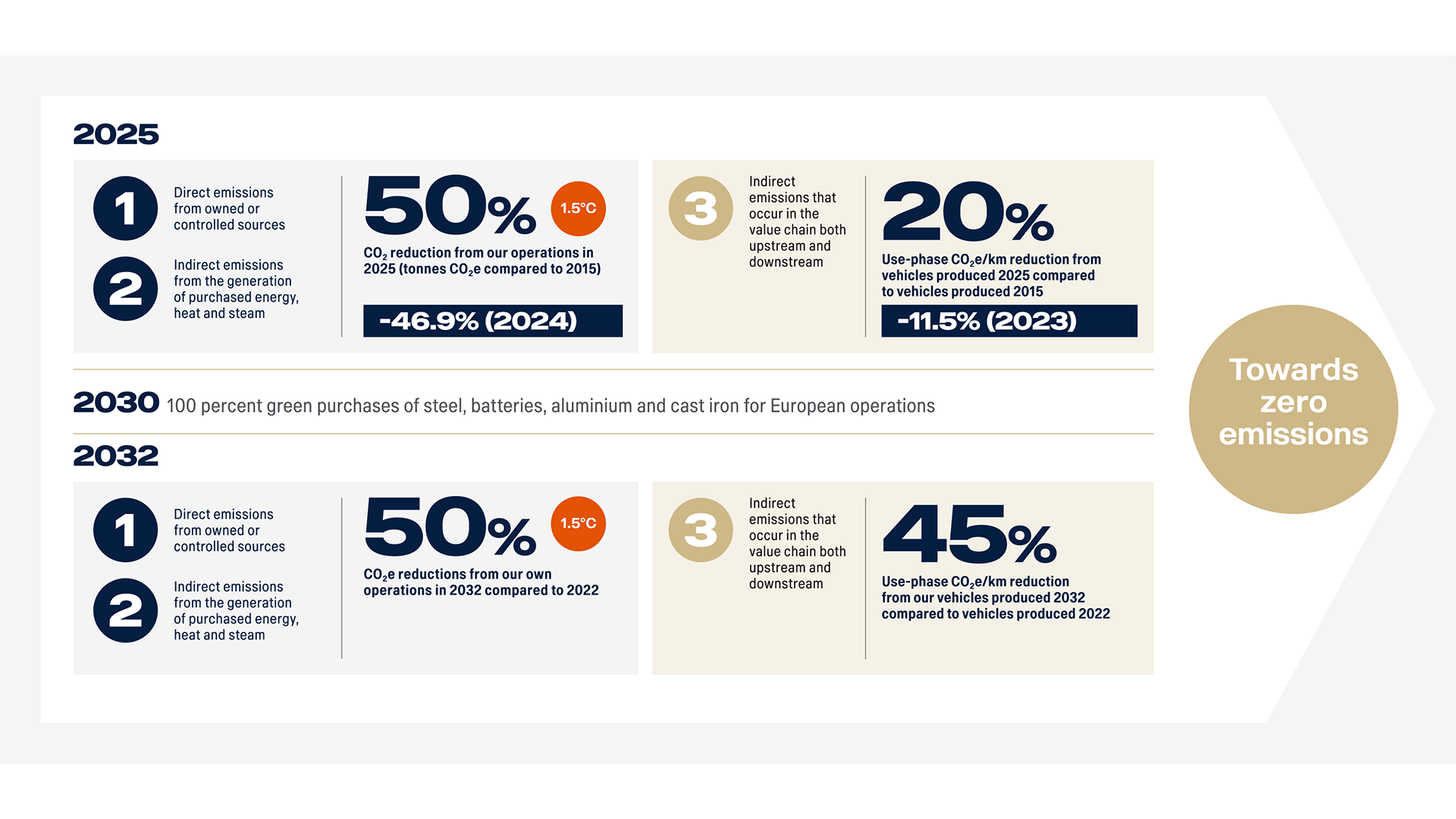
Scania's decarbonisation targets
Decarbonisation is the area where Scania can make the biggest contribution to sustainability. We have a plan to make that happen.
To manage our climate impact and mitigate risk, we are committed to reducing emissions throughout our entire value chain and across all relevant scopes.
We focus on our material impacts in three key areas: Operational emissions (scope 1 and 2), vehicle-in-use emissions (scope 3) and supply chain emissions.
Our science-based targets are supported by a suite of near-term and long-term decarbonisation targets and commitments across our full value chain.
Science-based climate targets
In 2020, we adopted science-based climate targets. We wanted not only to hold ourselves accountable, but also to set an example and inspire change across our sector. Our aim was to demonstrate that we had the technology, products, and strategies necessary to reduce CO2 emissions across our value chain, in line with scientific recommendations.
By 2025, our aim was to reduce emissions from our operations by 50 percent and from vehicles sold by 20 percent, compared to 2015. Whereas we are close to reaching the targets for our operations, we need to accelerate the work on reducing emissions from vehicles sold, where the bulk of the emissions occur.
Click to enlarge
Near term targets 2032
Although our forecast shows that we are unlikely to achieve our vehicles in use emissions target by 2025, we are determined to close the gap as much as possible. In the longer term, our commitment to reducing emissions in line with science has not wavered. To achieve this we have introduced new interim targets for 2022-2032, committing us to halving emissions every decade.
Own operations
Our operational carbon footprint includes the running of company assets such as our industrial and commercial facilities and our use of company vehicles (scope 1), as well as the energy we use for heating and cooling (scope 2). Decarbonisation activities include switching to renewable energy for our facilities and using electric vehicles for our transport needs.
In addition to our target to reduce operational emissions by 50 percent until 2025, we have supporting targets covering energy and use of fossil free electricity.
Supply chain targets
Scania's 2030 target is to use:
- 100 percent green batteries
- 100 percent green steel
- 100 percent green aluminium
- 100 percent green cast iron
Our definition of “green” requires eliminating the main sources of emissions by utilising new technologies, green electricity and/or recycled material. In batteries, for example, access to green energy in production is decisive. In the production of flat steel, replacing coal with green hydrogen is key.
